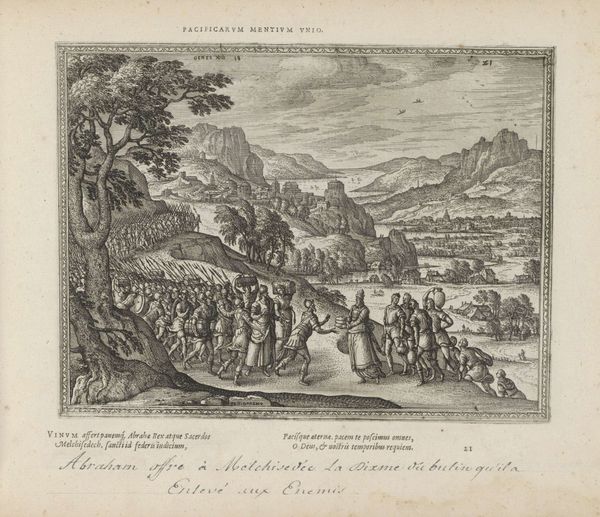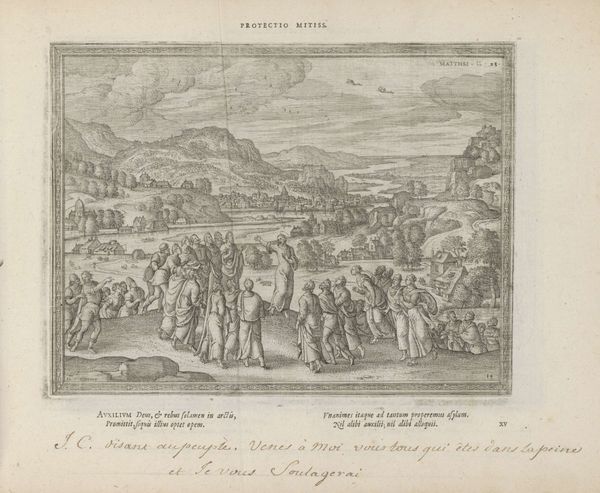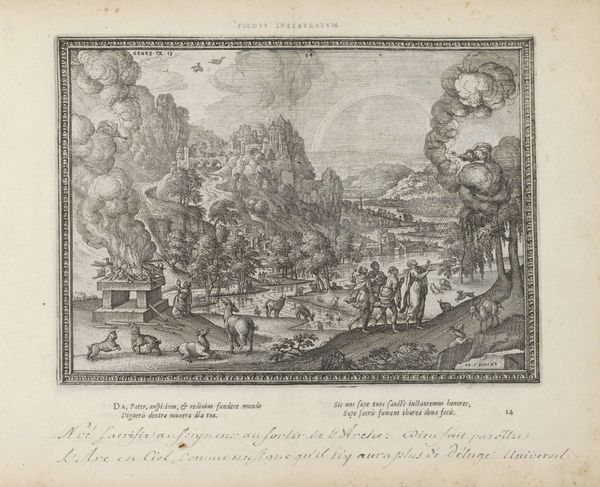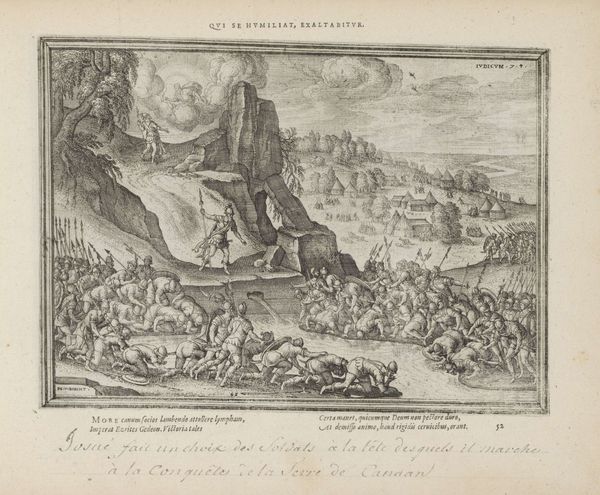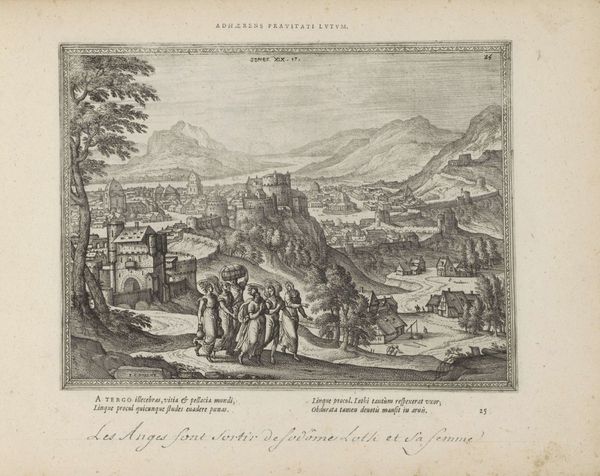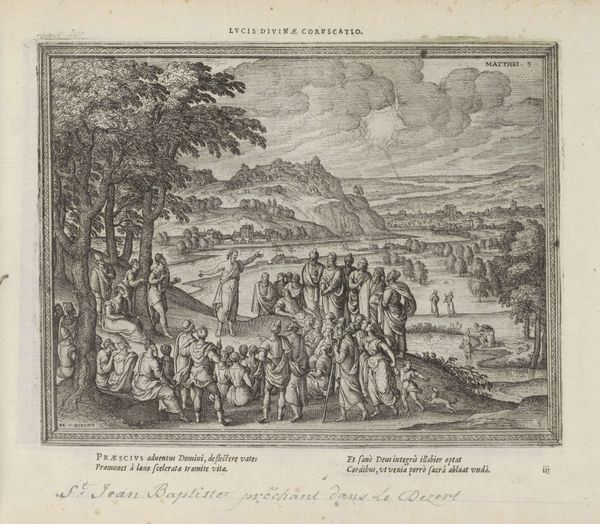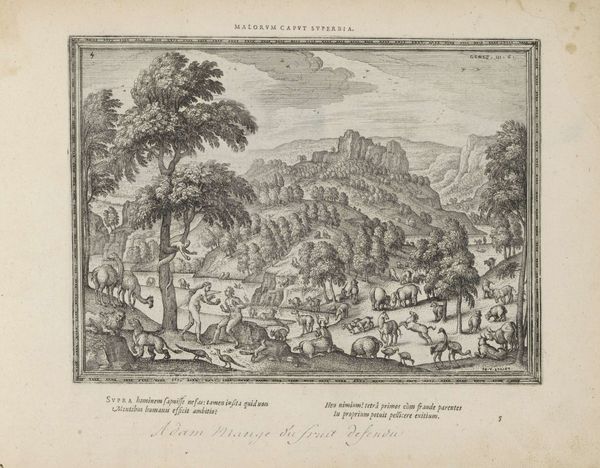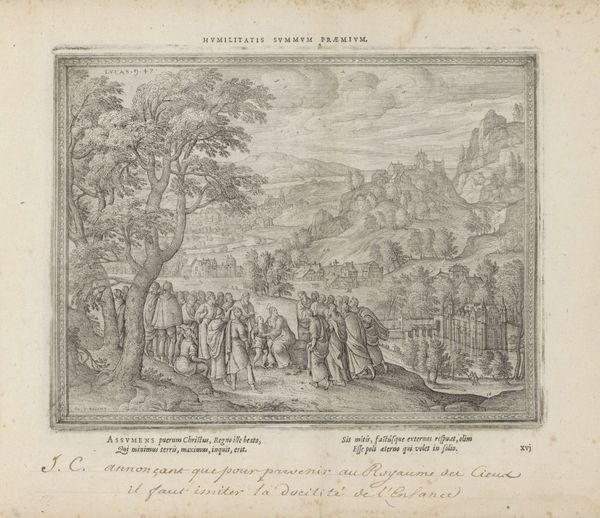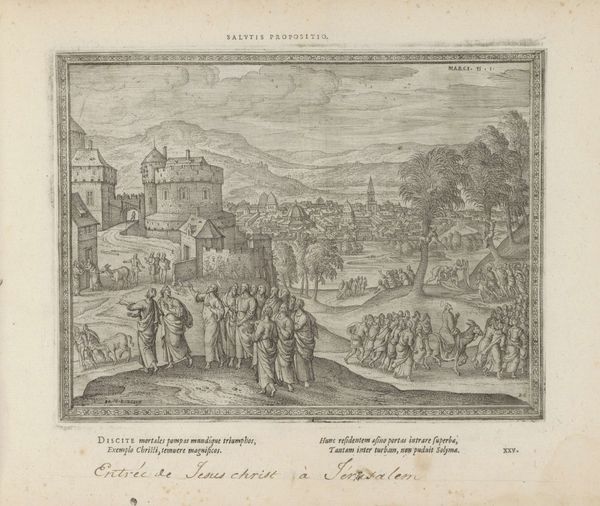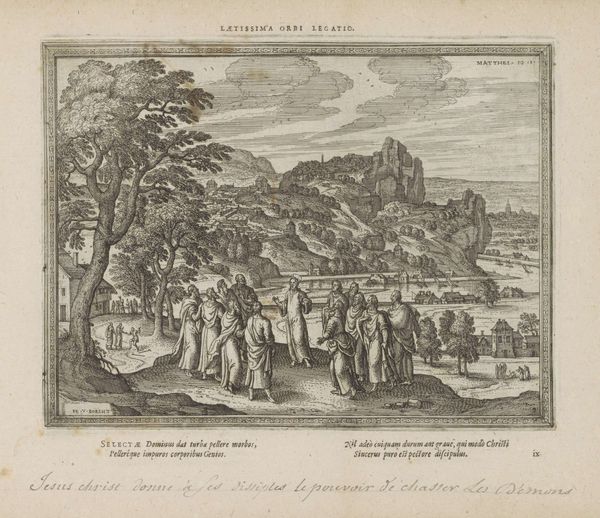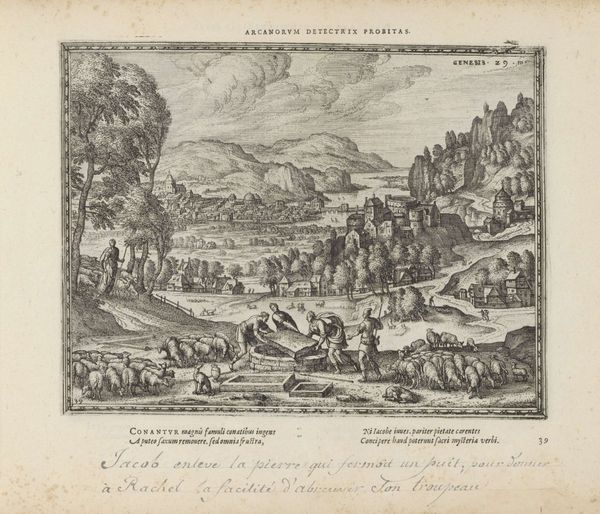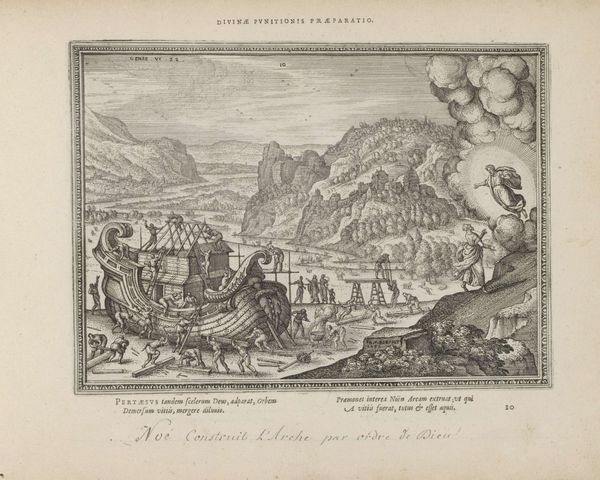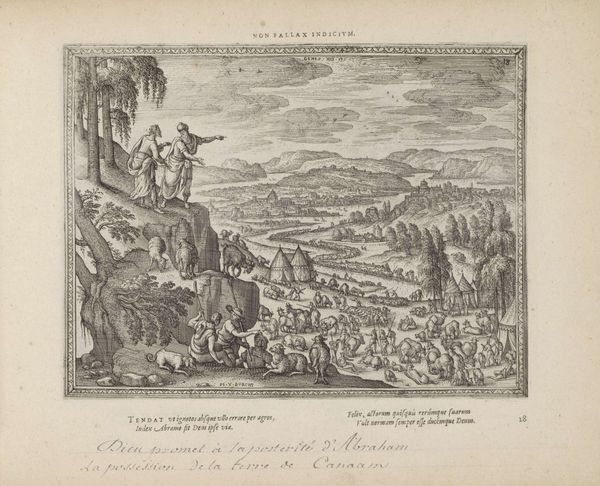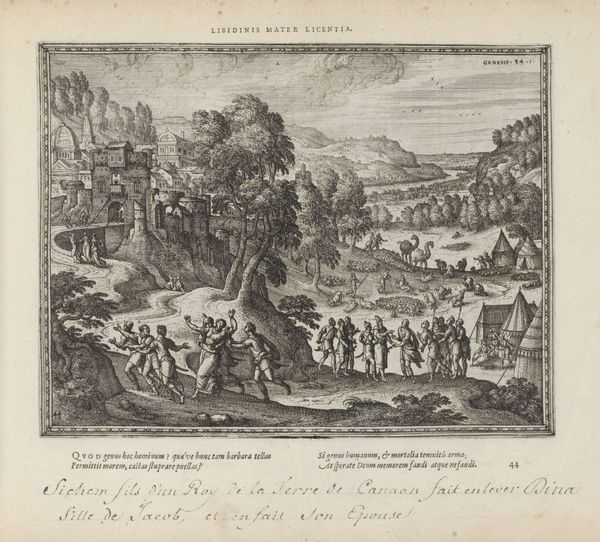
print, engraving
#
narrative-art
# print
#
old engraving style
#
landscape
#
history-painting
#
northern-renaissance
#
engraving
Dimensions: height 186 mm, width 247 mm
Copyright: Rijks Museum: Open Domain
Curator: This engraving, likely created between 1582 and 1613 by Pieter van der Borcht (I), depicts "Abraham and the King of Sodom". It's held here at the Rijksmuseum and exemplifies Northern Renaissance printmaking. Editor: Wow, it feels almost cinematic! Like a wide-angle shot from an epic film. The army receding into those stylized woods... there’s an amazing depth despite the delicate line work. Curator: The linear precision is key. Consider the context – prints like these were instrumental in disseminating visual narratives, especially biblical stories, to a wider audience during that period. The format was quite accessible. Editor: And this moment…Abraham refusing the spoils after rescuing Lot. It’s about more than just victory; it's about ethical integrity. I imagine it felt quite relevant for a society grappling with moral choices during periods of religious tension. Curator: Precisely. These engravings often carried strong socio-political undertones. Visual art was absolutely embedded within the struggles of power and virtue in the period. The clean refusal by Abraham becomes a potent emblem. The print medium made the message replicable and widespread. Editor: But on a purely aesthetic level…the mountains in the background feel so fantastical! The artist really embraced creative liberties to set the stage. Do you think audiences were looking for literal portrayals? Curator: I think it was understood there was both symbolic work and documentation going on. Accuracy was of course critical to the commission; artists sought to achieve fidelity through careful composition and style, aligning with period expectations of appropriate and effective visual communication. The symbolic register and landscape are not mutually exclusive. Editor: I still find something humorous in this stoic presentation of so many people… so tiny. There's a slight disconnect. Almost as if this moral triumph occurred in a miniature, beautifully rendered dollhouse. Curator: (chuckles) A perspective that underscores the power of artistic reinterpretation, I suppose. Viewing art across temporal distances brings about a whole variety of interpretations. Editor: Indeed. Seeing this print really ignited a set of connections – the tension of moral integrity versus gain, that tension continues to play out, doesn’t it? Curator: It is a testament to this piece that it provides an interpretive touchstone, resonating long beyond its time.
Comments
No comments
Be the first to comment and join the conversation on the ultimate creative platform.
